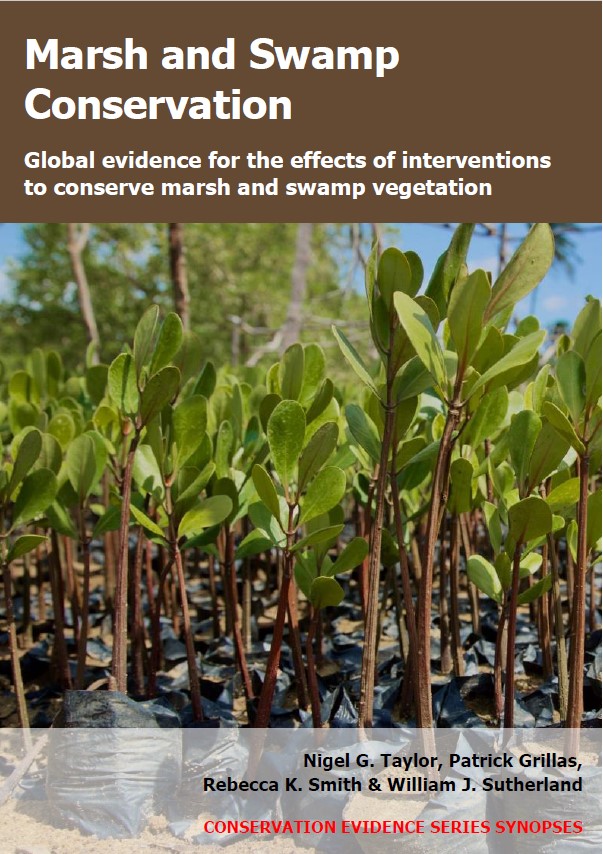Plug/dam canals or trenches: brackish/salt marshes
-
Overall effectiveness category Likely to be beneficial
-
Number of studies: 2
View assessment score
Hide assessment score
How is the evidence assessed?
-
Effectiveness
60% -
Certainty
40% -
Harms
0%
Study locations
Supporting evidence from individual studies
A replicated, site comparison study in 1983–1984 of 27 backfilled canals of varying salinity in Louisiana, USA (Neill & Turner 1987) reported that plugged canals had greater coverage of emergent marsh vegetation than open canals after 6–60 months, and were more likely to contain submerged vegetation. Statistical significance was not assessed. Considering 17 canals in brackish and saline marshes, emergent vegetation coverage was 7% within plugged canals (vs <1% in open canals) and 53% on the former spoil areas alongside plugged canals (vs 36% alongside open canals). Considering 27 canals of varying salinity (but mostly brackish or saline), 92% of plugged canals contained floating or submerged aquatic vegetation (vs 43% of open canals). Methods: In 1983 and 1984, vegetation was surveyed in up to 13 canals plugged with earth or seashell dams at one end, and 7–14 canals that were not (or no longer) plugged. Coverage of emergent and floating vegetation was estimated from aerial photographs. Submerged vegetation was identified in ground surveys. All canals, originally dug by the oil and gas industry, had been backfilled with adjacent spoil between 1979 and 1984. This study selected canals from the same master set of 33 used in (2).
Study and other actions testedA replicated, site comparison study in 1990 of 23 backfilled canals predominantly in brackish and saline marshes in Louisiana, USA (Turner et al. 1994) found that plugging had no significant effect on marsh vegetation coverage alongside the canals. After 6–11 years, coverage of emergent marsh vegetation on former spoil areas alongside canals did not significantly differ between plugged canals and open canals. However, there was a trend towards lower coverage alongside plugged than open canals. Methods: In 1990, aerial photographs were taken of 23 canals. All canals had been backfilled with adjacent spoil between 1979 and 1984. The mouths of some canals (number not reported) had also been plugged with earth or seashell dams at one end, to maintain water levels and reduce saltwater inputs. The area of the former spoil heaps covered by marsh vegetation was determined from the photographs. This study selected canals from the same master set of 33 used in (1). The study does not separate results for freshwater, brackish and saline marshes, but most canals (approximately 80%) were in brackish or saline marshes.
Study and other actions tested
Where has this evidence come from?
List of journals searched by synopsis
All the journals searched for all synopses
This Action forms part of the Action Synopsis:
Marsh and Swamp Conservation
Marsh and Swamp Conservation - Published 2021
Marsh and Swamp Synopsis





)_2023.JPG)














